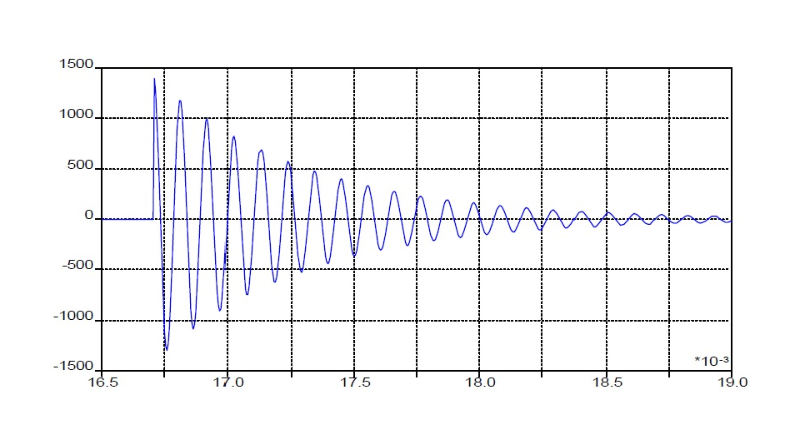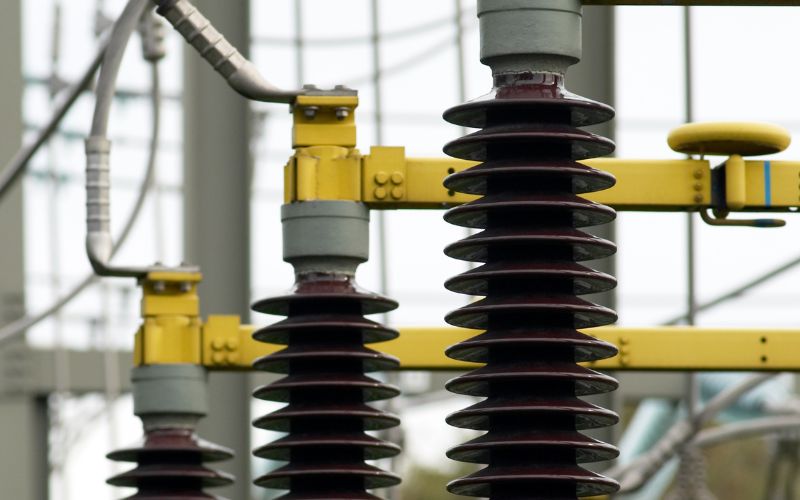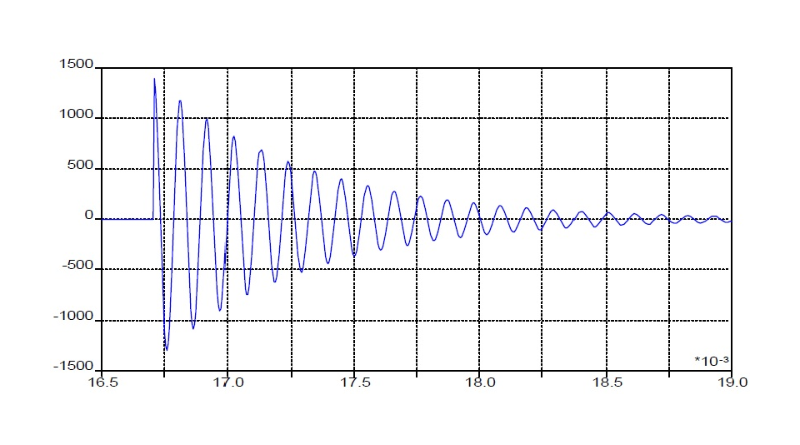
Oscillatory transients are temporary fluctuations in voltage or current caused by lightning strikes, switching operations, or sudden changes in load. They can damage equipment and cause instability and power outages. To manage them, we need to understand their characteristics, origins and impact on energy quality. In this way, we can guarantee the stability, reliability and optimal performance of electrical networks during unpredictable and dynamic transient events.
Understanding Oscillating Transients
Understanding oscillating transients is crucial in many areas of science and engineering. These transients refer to the temporary disturbances or fluctuations observed in oscillating systems before steady-state behavior is reached. By studying these transients, researchers can gain insights into the dynamic behavior of complex systems and analyze their response to external perturbations.
Definition and properties

Oscillatory transients are rapid, short-term fluctuations in voltage or current in electrical power systems. These transients exhibit high-frequency oscillations caused by various factors such as lightning strikes, switching operations, or load connections and disconnections. They typically last from a few microseconds to milliseconds and can significantly affect power quality.
An oscillatory (periodic) transient can be a violent, off-grid, steady-state frequency change of voltage, current, or both, each with positive or negative polarity.
An oscillatory transient involves a voltage or current whose instantaneous values quickly change polarity. It is delineated by predominant frequency, range, and size. These predominant frequency subclasses are listed in the following table: low, medium and high. The frequency series for these arrangements are selected to overlap common forms of oscillatory transient sensations in the electrical grid.
Origins and sources
- Lightning Effects : Direct or indirect lightning strikes can introduce high-energy voltage spikes into power systems.
- transient switching : Rapid switching of circuits, such as opening or closing circuit breakers, can result in transients due to abrupt changes in current or voltage.
- Load transients : Connecting or disconnecting loads with high inrush currents or sudden changes in power demand can result in transients.
Impulsive transients
A transient with a primary frequency range between 5 and 500 KHz and a duration of tens of microseconds (or several cycles of the primary frequency) is called a medium-frequency transient. Subsequent activation of the capacitor results in periodic transient currents in the range of tens of kilohertz, as shown in the figure. Cable switching results in periodic voltage transients in the same frequency range. Mid-frequency transients can also result from a system response to an impulsive transient.

A transient with a primary frequency component of less than 5 Hz and a duration of 0.3 to 50 ms is considered a low-frequency transient. This type of phenomenon frequently occurs in utility subtransmission and distribution systems and is caused by many events. The most common is the activation of a capacitor bank, which normally results in a periodic voltage transient with a primary frequency between 300 and 900 Hertz. The voltage level approaches 2.0 Hz. However, depending on the system damping, it is typically 1.3 to 1.5 Hz with a duration between 0.5 and 3 cycles. The distribution system may present oscillations or transients with primary frequencies lower than 300 Hz. They are generally associated with ferroresonance and the activation of electrical devices. Transients with capacitors in series can also fall into this category. They occur when the system reacts with low-frequency oscillating elements in the electrical device input current (2nd and 3rd harmonics) or when unusual conditions lead to ferroresonance.
It is also possible to explain transients (and other disturbances) in terms of their mode. A transient in a three-phase system with a separate neutral is a common mode or a normal mode, depending on whether it occurs between the line or neutral and ground or between the line and neutral.
Effects of Oscillating Transients

- Equipment Damage Oscillating transients can cause insulation damage, semiconductor failure, and deterioration of sensitive electronic components. Devices such as motors, transformers, and electronic devices are particularly vulnerable to damage from these transients.
- System instability Transients can lead to voltage drops, voltage spikes or frequency fluctuations and can destabilize the electrical network. This instability can lead to cascading failures, voltage fluctuations and malfunctions in sensitive equipment.
- Power Quality Deterioration Oscillating transients contribute to power quality problems such as: B. harmonic distortion, voltage ripple, and waveform distortion. These effects can affect device performance and lead to inefficiencies and malfunctions.
Reduction of oscillating transients
- Surge Protection Devices (SPDs): Installing surge protection devices at strategic locations on the power grid can dissipate excessive transient power and protect equipment from damage.
- Filtering and conditioning: The use of filters and voltage conditioning devices can mitigate the effects of transients by suppressing high-frequency components and smoothing out voltage fluctuations.
- Grounding and Bonding Proper grounding and bonding procedures help dissipate transient power and minimize the risk of voltage spikes or equipment damage.
- Protective relays and circuit breakers: Implementing protective relays and quick-response circuit breakers can detect and respond to transient events, isolating affected areas and preventing further damage.
- Education and Training: By promoting awareness and training on power quality issues, including flickering transients, operators and maintenance personnel can effectively identify, analyze and manage transient-related issues.
Future trends and challenges

- Increasing Complexity of Power Systems With the integration of renewable energy sources, energy storage and smart grid technologies, power systems are becoming increasingly complex, creating new challenges in managing and mitigating flickering transients.
- Network resilience and disruption mitigation Research and development efforts focus on improving network resilience through advanced disruption detection and mitigation techniques, such as the use of advanced sensors, real-time monitoring and predictive analytics.
Conclusion
To ensure the stability and reliability of electrical networks, it is essential to control the range of oscillating transients in power quality. Understanding the origins, effects and mitigation strategies of these transients is critical to protecting equipment, maintaining system stability and ensuring high power quality standards. By implementing appropriate mitigation measures and staying ahead of emerging challenges, grid operators and engineers can effectively manage the range of oscillating transients, resulting in more resilient and efficient power systems.

